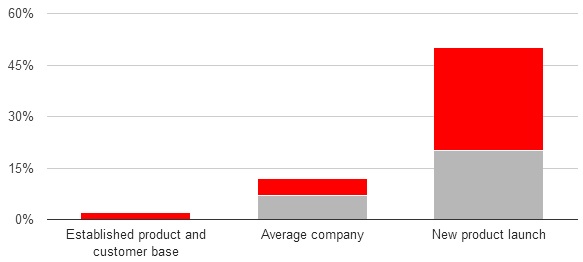There are some great companies working in the OpenSim ecosystem. Unfortunately, many of the customers who would benefit from their services never get to know about them because of a lack of outreach and marketing.
Everybody suffers. The customer’s needs don’t get met because they settle for a product or service that doesn’t meet their needs. And the company suffers because it doesn’t get the revenues from those customers. In the worst case scenario, the company goes out of business, and those potential customers will never even know what they have missed.
I’m assuming here that your company provides a valuable product or service that would make the lives of your customers significantly better, and that somewhere, out there, there’s a market for your product or service. If your product isn’t that valuable or beneficial to anyone, that’s a different story — and I’ll be writing about that in a different column.
Marketing means that the customers learn about your company, develop trust in your company, and are reminded of your company right when they are ready to buy.
To achieve these goals, you can promote a word-of-mouth campaign, use social media, reach out to influencers and the media, cold call potential clients, create and distribute articles or videos or other marketing content, or buy advertising.
All of these cost time, money, or both. How much should you spend?
Marketing based on share of revenues
According to LegalZoom expert Stephanie Paul, the most popular way to set a marketing budget is as a percentage of projected sales.
The average amount is between 9 and 12 percent of sales revenues. For small companies, with less than $5 million in revenues, the U.S. Small Business Administration recommends a marketing-to-sales ration of 7 to 8 percent.
For a new product, when advertising needs and publicity are greater, that could go up to as much as 20 to 50 percent of sales in the first year, and drop down to at low as 2 percent of sales for a small company with an established product and customer base.

Industry-wide advertising ratios are available each year from Schonfeld & Associates, though they include just the advertising, not all marketing expenses. For example, the 2013 advertising-to-sales ratio for the prepackaged software industry was 3.2 percent, and 5.3 percent for computer programming services.
According to the National Federation of Independent Business, companies typically allocate 2 to 5 percent of sales for advertising. The largest companies actually spend less on marketing, as a percentage of sales, than small companies — Walmart, for example, spends only about 0.4 percent on marketing — it has an established customer base, plenty of brand-name recognition, and its sales revenues are so high that even at this low rate, it is still able to saturate its target markets with its ads.
A small company, or one still struggling to establish its brand name, has to spend a relatively higher percentage of its revenues on marketing.
So, a company with annual revenues of $100,000 might set aside $7,000 to $8,000 for its total annual marketing budget, $2,000 to $5,000 of that for advertising and the rest for other kinds of marketing.
By pegging the budget to income, a company can also ensure that the budget never gets out of control.
Marketing based on sales goals
Setting marketing budgets based on marketing plan objectives is the most effective method, according to Paul.
Say, for example, a company wants to reach 100,000 potential customers during its first year and ensure that each person has at least seven points of contact.
Seven points of contact, by the way, is the average number of times a would-be customer hears about a product before deciding to buy. A point of contact could be a Tweet mentioning the company, a story in the media, a recommendation from a friend, an ad or a direct email from the company.
To reach this goal, a company might need to send out a certain number of tweets, post a certain number of articles, get a certain number of media mentions, and run an ad for a certain number of impressions.
The time and money it would take to do all this is the marketing budget, and if the company doesn’t have the funds already available, it might require outside fundraising.
Which to choose?
Which approach to take depends on how urgently your company needs to reach its prospective customers.
For example, if you have a unique, life-saving cancer drug and people will die if they don’t get it, then you need to ensure that the entire medical community hears about it, at conferences, in the media, and through every other available channel.
If you offer a unique product, but expect to see competitors piling on in the near future, you might want to get your product out in front of customers before the copycats arrive.
If, however, you provide a product or service that your customers can easily get elsewhere, and are more interested in slow and steady growth, then a marketing plan budgeted as a share of revenues might be a better fit.
- OSgrid back online after extended maintenance - April 16, 2025
- Analysts predict drop in headset sales this year - March 25, 2025
- OSgrid enters immediate long-term maintenance - March 5, 2025
